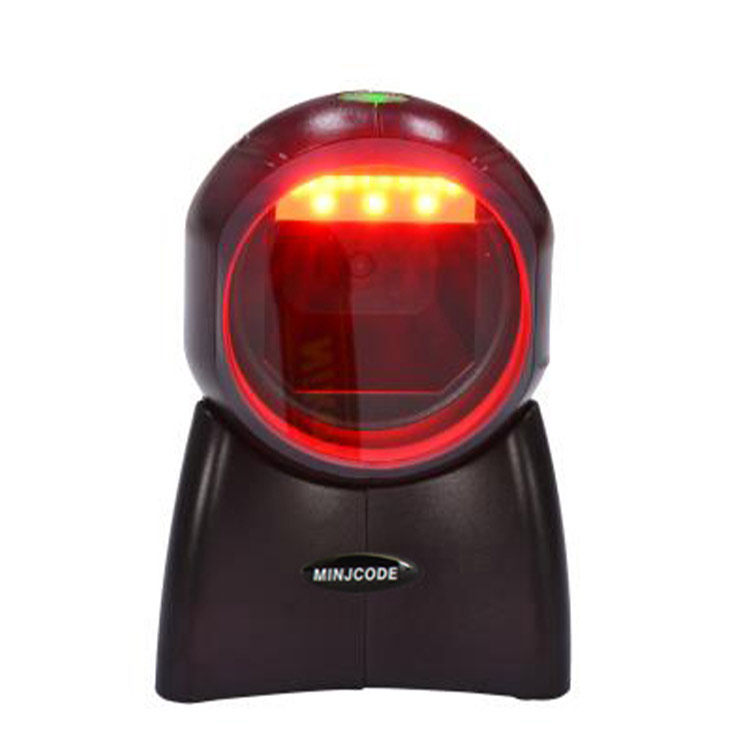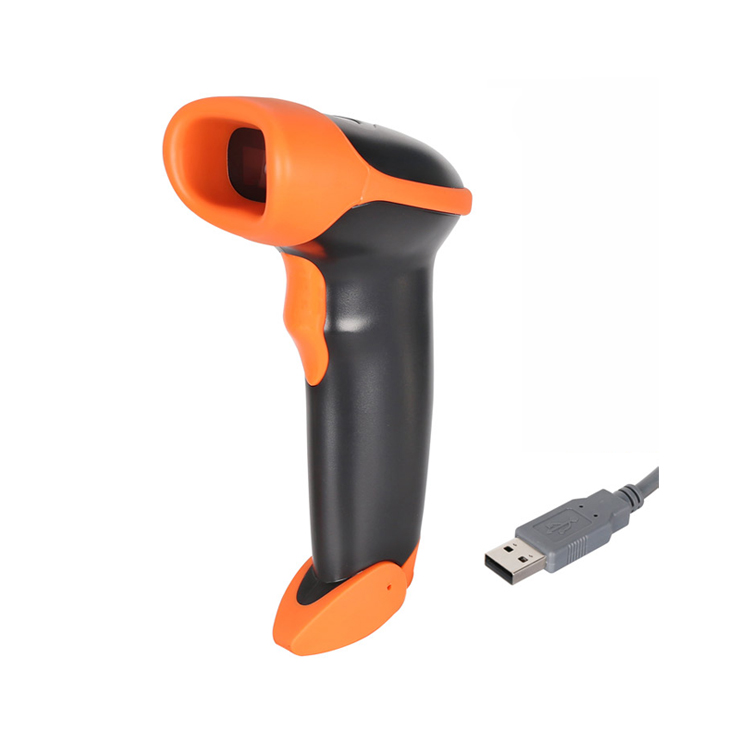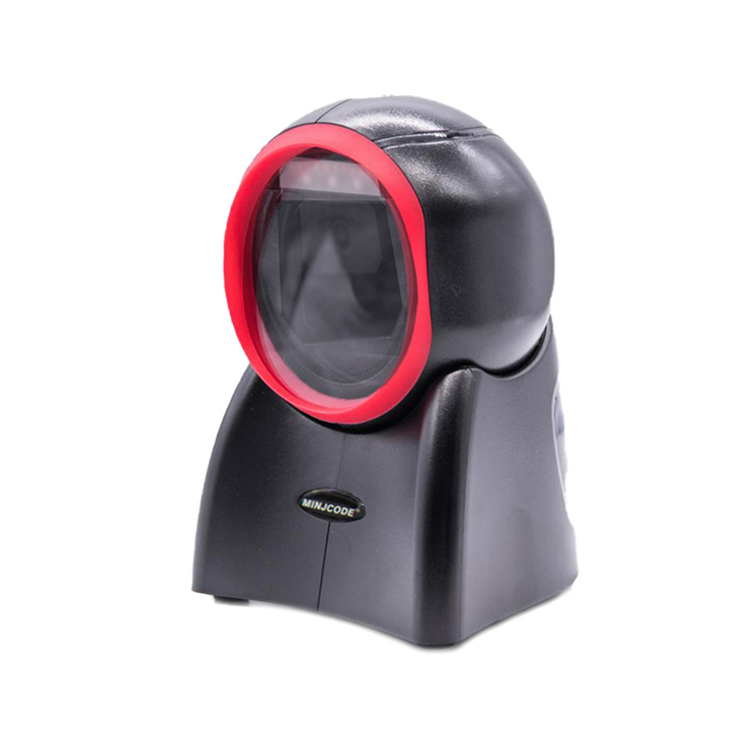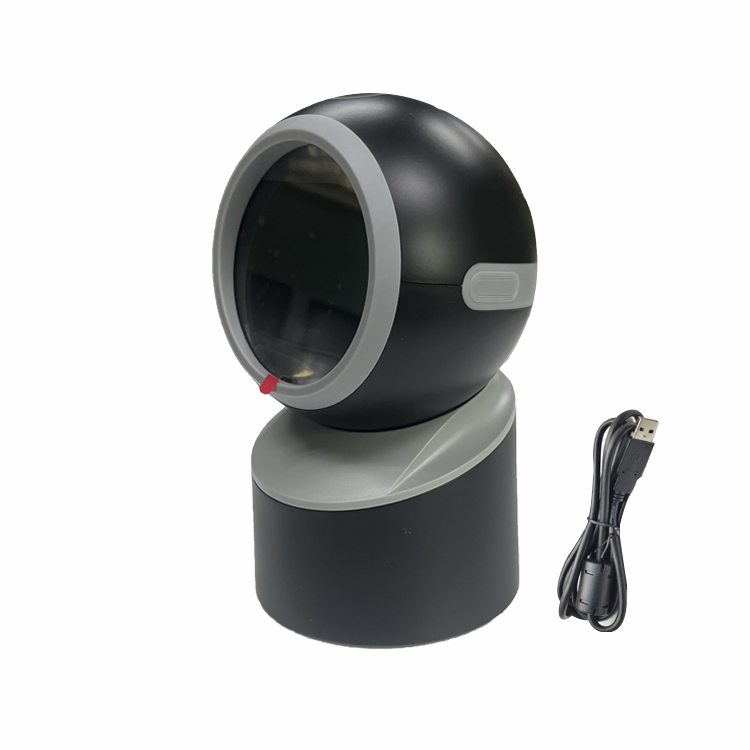A barcode scanner is a fast and efficient identification and collection tool that has been widely used in many industries such as logistics, supermarkets and healthcare. It can quickly scan not only commodity barcodes, but also courier, ticket, traceability codes and many other identification codes. So what is the difference between them? Which is better and how should we choose?
一:2D handheld wired barcode scanner
1. Definition: A 2D wired handheld scanner is a device that can be optically scanned to identify and capture information. Compared to traditional 1D handheld scanners, 2D handheld scanners are capable of recognising a wider range of barcode and 2D code formats.
2. Structure: 2D wired barcode scanners handheld usually consist of a housing, optical capture unit, decoder, interface circuit board, buttons and other parts. It is usually short and compact, easy to hold and has a trigger button to activate the scanning function.
3. Advantages and disadvantages
3.1 Advantages:
More types of barcodes can be read, such as 2D codes. Higher speed and efficiency of reading. More accurate recognition and less likely to be misread. Can be connected to a wide range of devices for data transfer.
3.2 Disadvantages:
Relatively high price. Light conditions such as illumination are required.
4. Applicable scenarios and applications 2D handheld scanners can be widely used in logistics, manufacturing, retail, medical, financial and other fields. For example, barcode scanning for express parcels in logistics sorting, 2D code scanning for security access control, 2D code scanning for mobile phone mobile payment, etc.
5.Performance
5.1 Scanning speed and accuracy: 2D handheld scanners are much faster and more accurate than traditional barcode scanners and are capable of complete, fast and accurate recognition of 2D codes, barcodes and other identifiers.
5.2 Barcode type recognition capability: 2D handheld scanners can recognise 2D codes and 1D codes, including different types of barcodes such as QR codes, DataMatrix codes, PDF417 codes, Aztec codes, Code39, EAN-13 etc.
5.3 Adaptability: 2D handheld scanners are highly adaptable and can be used in different environments and scenarios, such as different lighting, colours, materials and locations.
If you have any interest or query during the selection or use of any barcode scanner, please Click the link below send your inquiry to our official mail (admin@minj.cn) directly! MINJCODE is committed to the research and development of barcode scanner technology and application equipment, our company has 14 years of industry experience in the professional fields, and has been highly recognized by the majority of customers!
二:Omnidirectional barcode scanner
1. Definition: Omni-directional barcode scanner is a multi-directional scanning barcode device, capable of identifying barcodes of various angles and directions, and with high scanning speed and accuracy.
2. Structure: An omnidirectional barcode scanner usually consists of a housing, light source, lens, image sensor, decoder and other parts. It is usually cylindrical in shape and has a stand at the bottom for easy placement on the scanning platform, so that barcodes can be quickly scanned by simply placing them close to the scanner.
3. Advantages and disadvantages
3.1 Advantages:
360 degree multi-directional scanning is possible. Fast scanning speed, able to quickly identify a large number of barcodes. Highly accurate scanning capability with high recognition accuracy. - Good adaptability to various lighting conditions and barcodes of different materials.
3.2 Disadvantages:
Shortcomings: Higher price. Relatively weak recognition capability for non-standard barcodes.
4. Applicable scenarios and application scope Omni-directional barcode qr scanner are widely used in logistics, retail, warehousing, manufacturing and other fields, such as barcode scanning of express parcels, barcode scanning of supermarket goods, etc.
5. Performance
5.1 Scanning speed and accuracy: The scanning speed of omnidirectional barcode scanner is much higher than that of traditional barcode scanner, which can scan a large number of barcodes quickly and efficiently, and accurately locate and identify barcodes, improving work efficiency.
5.2 Adaptability: Omni-directional barcode scanners can adapt to different planar and three-dimensional angles and have greater adaptability than traditional scanners to read a variety of different barcodes.
5.3 Compatibility: The omni-directional barcode scanner can be connected to a variety of devices such as computers, smartphones and tablet PCs through different types of interfaces to meet the needs of different users.
5.4 Reliability: The omnidirectional barcode scanner has a high degree of stability and reliability, and can maintain excellent performance during a long period of use.
5.4 Software and hardware synergy: 2D handheld barcode scanners can be connected to many different types of devices, including computers, smartphones, tablets, etc., to meet the needs of different users.
三:Difference between a 2D handheld wired barcode scanner and an omni-directional barcode scanner
The difference between a 2D handheld USB barcode scanner and an omni-directional barcode scanner is as follows
1. Scanning speed and accuracy:
2D wired handheld barcode scanner needs to align the handheld device to the barcode, a slight deviation may lead to failure to recognise the barcode, so the scanning speed and accuracy are relatively low; while the omni-directional barcode scanner recognises the barcode with higher accuracy and faster scanning speed through multi-angle and 360-degree scanning.
2. Different appearance:
As shown below, 2D barcode scanning guns are generally meant to be hand-held, so they will have a relatively long handle; while omni-directional barcode scanners are desktop vertical scanning, with a relatively large area underneath, which is convenient to stand on the desktop.
3. Scanning efficiency of small batch goods:
2D handheld wired barcode scanner needs to align the barcode of each good one by one to identify, the scanning time of each good is longer, which is not suitable for the rapid scanning of large batch of small goods; while the omni-directional barcode scanner can quickly scan multiple goods, which is more efficient for scanning small batch goods.
4. Different price, omni-directional barcode scanner is generally higher than 2D barcode scanner.
So how do you choose between a 2D barcode scanner and an omni-directional barcode scanner? Which is better? Our advice is that if it is a large supermarket or high traffic shop, an omni-directional barcode scanner should be given priority as the scanning performance is better; if it is a small individual shop or low traffic shop and the budget is not that much, you can consider a 2D barcode scanner.
If You Are in Business, You May Like
Recommend Reading
Post time: Jun-09-2023





